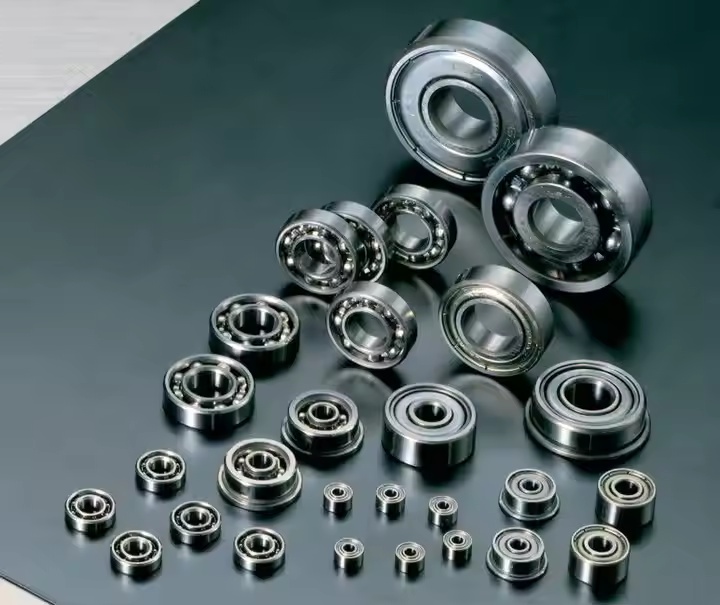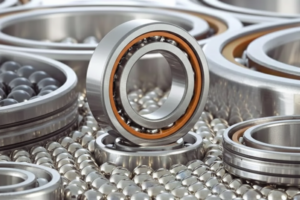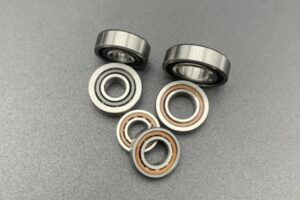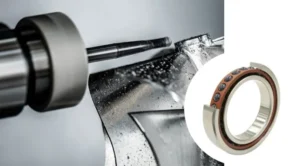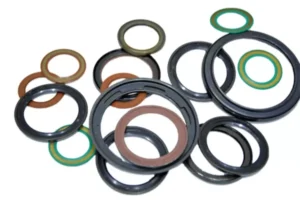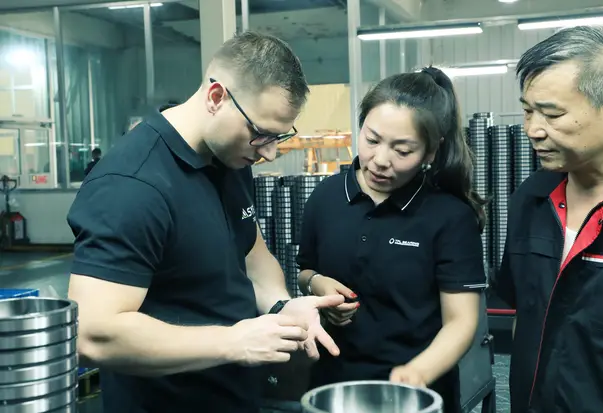Introduction
Should your search for ball bearings have turned up “10mm ball bearings,” you may have stumbled across. But honestly, what does that mean? We at TFL Bearings are here to dissect it for you. This post will define a 10mm ball bearing, discuss its applications, and explain why it important. You will be sure at the end about choosing the correct one for your project. We will also offer some advice on how to identify the best choices for your requirements.
What Does “10mm Ball Bearings” Mean?
When people talk about “10mm ball bearings,” they’re usually referring to the size of the hole in the middle of the bearing. This is called the inner diameter. For a 10mm ball bearing, the inner diameter is exactly 10 millimeters. But there’s more to know before you buy.
Inner Diameter Explained
The most critical dimension is the inner diameter since it indicates if the bearing will fit your shaft. Working with a 10mm shaft calls for a bearing with a 10mm internal diameter. Simply said, right? What qualifies a bearing for your machine or project is its inner diameter. The bearing won’t run as expected without the correct size.
![Deep Groove Ball Bearings - [10mm x 20mm x 6mm] Chrome Steel Balls for Motors Machine Tool Gearboxes Bearing Use, Double Shielded ABEC1](https://www.sdtflbearing.com/wp-content/uploads/2025/05/Deep-Groove-Ball-Bearings-10mm-x-20mm-x-6mm-300x300.jpg)
Outer Diameter and Width
The width, sometimes referred to as thickness, and the outer diameter make up the bearing dimension overall. You can determine whether the bearing will function where you want it to by looking at these figures. For instance, 10x26x8mm dimensions means:
- 10mm : This is the inner diameter.
- 26mm : This is the outer diameter.
- 8mm : This is the width.

Could “10mm” Mean Something Else?
Sometimes, though it’s not as common, “10mm” could talk about the outside size of a ball bearing. Imagine measuring that whole donut from one edge all the way to the other. That would be the outer diameter. But when people just say “10mm ball bearing,” they usually mean the inside hole. It’s also very unlikely that the “10mm” refers to the size of a ball bearing inside the bigger bearing itself. Those are usually much smaller! We even make some really small ball bearings and tiny ball bearings for special jobs.

Understanding these dimensions ensures you get a bearing that fits perfectly. Don’t worry if you don’t know the other measures; many companies, like TFL Bearings, give full specs for every product.
Why the Size of a Ball Bearing Matters
The size of a ball bearing has the same effect on how well it works as how well it fits in a machine. If the bearing is too small or too large, it won’t be able to handle the load well, which can cause wear and pressure. This is why you should pick the correct application size. Whether you are working on an industrial engine, a washing machine, or a skateboard, proper operation depends on the suitable size.
What are Bearings with an Inner Diameter of 10mm
When it comes to bearings with an inner diameter of 10mm, there are a lot of options out there. Bearings usually use millimeters (mm) for size, so you’ll see lots of different types that fit your needs. Let’s check out some common ones that might work for you:
Deep Groove Ball Bearings (6000, 6200, 6300 models)
Common models abound in 6000, 6200, and 6300. Their outside diameter—that is, their general size—defines most of their differences. If you need something that can manage radial loads—that is, pressure pulling from the sides—and runs effectively at medium or low speeds, these bearings are excellent. For many conditions, they are a decent all-rounder.
Angular Contact Ball Bearings (7000C, 7200B, 7300AC models)
Next, there are angular contact ball bearings. Popular models here include 7000C, 7200B, and 7300AC. These bearings are a bit special because they can handle two types of loads at once—radial and axial (pressure from the sides and front-to-back). One thing to keep in mind is that they usually work best when used in pairs. So if you’re thinking about using these, plan on installing two of them together for the best results.
Miniature Ball Bearings vs. 10mm Ball Bearings
Miniature bearings are rather little bearings. Small, light, straightforward, highly precise they are. Many different precision instruments make advantage of them. Within the sphere of electronic equipment, little bearings are also absolutely essential parts. Furthermore quite useful in medical equipment, space projects, wind turbines, and other sectors are small bearings. For example, miniature medical linear guides in medical equipment, gyroscopes on satellites, and wind turbine bearings in wind turbines all rely on the support of miniature bearings.
For skateboards, fans, and other small devices, a 10mm ball bearing is still decent even if it isn’t particularly tiny. Micro ball bearings are used in electronics and robots where accuracy is very important. If the parts that move in your project are very small, you may need a micro bearing instead of a 10mm one.

Comparing 10mm Bearings to Larger Metric Ball Bearings
10mm ball bearings aren’t the smallest, but they’re still pretty small. Also, they’re not the biggest. Metric ball bearings with inner diameters of 20mm, 30mm, or more are used in cars, trucks, and heavy-duty industry equipment because they are bigger. A 10mm ball bearing is just the right size for small gadgets while also being strong enough to handle light loads.
Common Uses of 10mm Metric Ball Bearings
Skateboards and Rollerblades
10mm ball bearings are often used in skateboard wheels because they move easily and don’t break when you ride them. These bearings must be used on any skateboard that is being built or fixed. They’re cheap, last a long time, and are simple to switch out when they wear out. Also, they are simple to find since they are common.

Household Appliances
10mm ball bearings are used in a lot of home products, like blenders, washing machines, and fans, to keep moving parts spinning without any friction. These tools wouldn’t work as well without them. As an example, ball bearings inside the drum of a washing machine make it easier for the drum to spin. If you are changing something, replacing the old 10mm bearings with new ones could make a big difference.
Industrial Machines
10mm ball bearings are used in motors, conveyor belts, and other tools in factories. Machines last longer because these bearings help keep them in good shape. They are also used in drills, grinders, and other tools that need to spin quickly. Having reliable 10mm ball bearings can help you work faster and with less downtime in a workplace setting.
DIY Projects and Hobbyist Uses
A lot of artists and people who like to do their own projects choose 10mm ball bearings. They’re strong enough to handle everyday use but small enough for model cars, drones, and RC cars. If you are making something at home, these bearings are a good and cheap choice.
How to Choose the Right 10mm Ball Bearing
Picking the right bearing isn’t hard if you know what to look for. Here’s how to make sure you get the best one for your project.
Check the Dimensions
Before buying, you should always check the inner diameter, outer diameter, and width a second time. A 10x26x8mm bearing, for instance, won’t fit in a space meant for a 10x30x9mm bearing. Be very careful when you measure! Before you replace an old bearing, make sure you know what its measurements are. Plan ahead to make sure the bearing will fit when you’re making something new.

Think About the Material
If you have to work in wet or humid situations, stainless steel is the best choice. It lasts longer and doesn’t rust. It is better to use chrome steel for big loads because it is stronger. Some bearings have extra coats that make them last longer. Pick the material that works best for you based on where and how you plan to use the bearing.
Look for High Precision and High Speed
If you require a bearing that spins fast and precisely, search for high speed ball bearings or high accuracy ball bearings. These help one to function effectively in trying circumstances. Making something like a drone or a high-speed fan calls for both accuracy and quickness. Excellent bearings will reduce friction and improve performance, therefore facilitating more seamless work.
Consider the Load Capacity
Not every 10-mm ball bearing is produced equally. Some are made for lesser weights while others can handle more. Make sure the bearing you choose can resist the weight or pressure your project calls for. It might so fail totally or wear out quickly otherwise.
Conclusion
With your newfound knowledge, you may confidently choose 10mm ball bearings. For components that work for fixing industrial machinery, improving equipment, or building skateboards, check out TFL Bearings. Please do not hesitate to contact us if you require assistance in locating any item and ensuring that it is compatible with your organization.
Are you ready to begin? You can look through our 10mm ball bearings on our website right now. Get in touch with us if you’re not sure which one you need—we’re here to help!
5 Most Popular Related Questions and Answers
What does “10mm ball bearing” mean?
It refers to the inner diameter of the bearing, which is the size of the hole in the middle. For a 10mm ball bearing, the inner diameter is 10 millimeters.
A 10mm ball bearing has dimensions of what?
The kind of bearing affects the dimensions. Usually measuring 10x26x8mm, 10mm is the inner diameter, 26mm the outside diameter, and 8mm the width.
Are 10mm ball bearings small?
Though they’re not the tiniest, 10mm ball bearings are modest relative to more general metric ball bearings. Still smaller are miniature ball bearings and micro ball bearings.
For what purposes do high precision ball bearings find application?
Among machines that must spin rapidly and precisely are bots, medical equipment, and high-speed motors. High precision ball bearings enable these devices.
Reliable 10mm ball bearings are sold where?
One can purchase them from reputable producers like TFL Bearings. To suit your requirements, we provide a large spectrum of sizes and materials.
